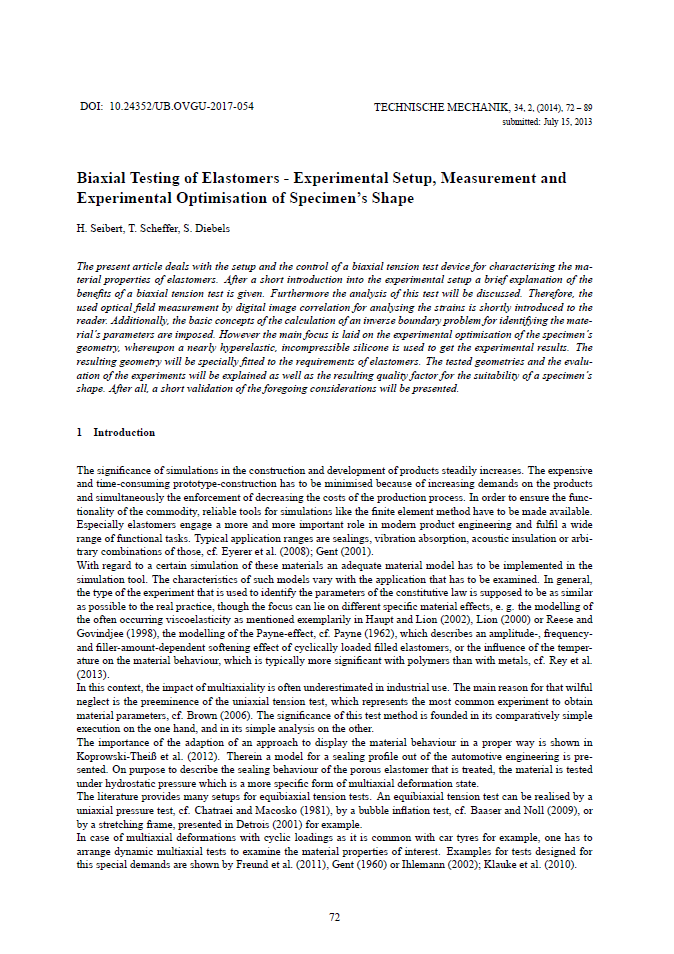Biaxial Testing of Elastomers
Experimental Setup, Measurement and Experimental Optimisation of Specimen’s Shape
DOI:
https://doi.org/10.24352/UB.OVGU-2017-054Abstract
The present article deals with the setup and the control of a biaxial tension test device for characterising the material properties of elastomers. After a short introduction into the experimental setup a brief explanation of the benefits of a biaxial tension test is given. Furthermore the analysis of this test will be discussed. Therefore, the used optical field measurement by digital image correlation for analysing the strains is shortly introduced to the reader. Additionally, the basic concepts of the calculation of an inverse boundary problem for identifying the material’s parameters are imposed. However the main focus is laid on the experimental optimisation of the specimen’s geometry, whereupon a nearly hyperelastic, incompressible silicone is used to get the experimental results. The resulting geometry will be specially fitted to the requirements of elastomers. The tested geometries and the evaluation of the experiments will be explained as well as the resulting quality factor for the suitability of a specimen’s shape. After all, a short validation of the foregoing considerations will be presented.





